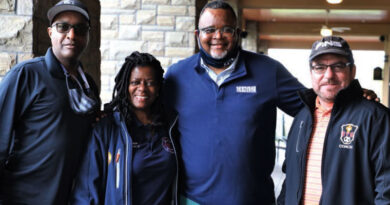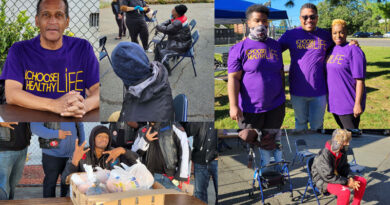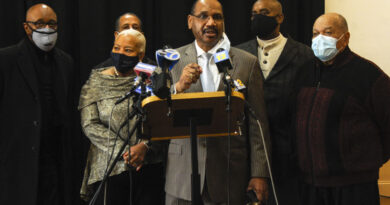Etiquette in the time of COVID-19—What do I do?
Doris Young Boyer is a keynote speaker, published author and protocol and etiquette expert who provides advice and training on the behaviors that create a powerful presence and peak performance.
For starters take a deep breath and then exhale. There have been massive changes so most of us are asking the same question: How do I behave in this new normal? The onset and continuation of the coronavirus has changed just about everything.
Safety First
Wearing a mask, washing our hands and social/physical distancing are the guidelines of the day to protect ourselves and each other from transmitting or receiving the coronavirus.
Yes, it is appropriate to speak up and to ask if someone will wear a mask, pull up their mask, or move farther away from you. There are strategies for doing so. However, safety first as the goal, extends beyond protecting yourself from the virus alone. Everyone does not see their roles and responsibilities during the pandemic the same way. Be aware, even, if you ask graciously, compliance may not be the result. Wearing a mask has become a political statement of independence and in some cases a statement of defiance.
The question becomes how can I politely deal with people who disregard the new guidelines? Behavior that affects you directly needs to be addressed. However, general OPB (other people’s behavior) is not your responsibility. Let some things go.
Wearing a Mask
Masks are required in most indoor and outdoor spaces. The management of that space is responsible for compliance with its policy. What strategies can you use if someone in your joint space is not wearing a mask or their mask is around their neck rather than their mouth? Make it about both of you having a stake in the requested behavior. For example, having an extra clean mask with you that you can offer the person, “I have an extra clean mask. I would be happy to give it to you so we both can be safe.”
Ask the person, graciously, to pull up their mask, saying “It is safer for both of us if our mouths and noses are completely covered. Would you please pull up your mask?” If the person refuses, turn your face away from them and achieve as much distance as possible. If necessary, move away completely from that space. The goal is to speak up about health and safety. Insulting or shaming the person usually does not work and can turn ugly.
A key to these tense situations is to have some memorized and practiced phrases, such as the ones above, you can use that help reduce your own emotions when speaking up. We can increase our communication while wearing a mask by smiling when we come face to face with others. The smile will be reflected in your eyes. Speaking up and speaking clearly will keep people from leaning into your space to hear what you are saying. A wave or a nod when we pass others can increase our overall well-being.
When eating, indoors or out, remove the mask completely. The used mask is not to be placed on the table at any time during the meal. Place the used mask in a bag, pocket or an envelope or under your napkin so that it will be handy to put back on when your server is around and when you leave the space. Wearing a mask when talking with the server shows respect for the health and well being of the server.
Social/Physical Distancing
When in a line, on a sidewalk, or in conversation with others, six feet is the recommended distance from other people. Six feet is about an adult arm span away from others. When walking in a group, move to single file to make room for others who want to pass. It can be helpful to step aside to create more space. If someone makes this accommodation for you, some acknowledgement like saying thank you or a nod is appropriate and appreciated. If you need more space because someone is too close to you, it is appropriate to speak up and let people know you are following the guidelines, step back or to the side and say “I am socially distancing and keeping six feet away” or the following, “Excuse me, let’s have more space between us,” or “More social distance space please.”
Greetings, Handshakes, and Hugs
It is best to avoid greetings that involve touching another person that is not quarantined with you. This involves handshakes, hugs, fist bumps, high fives, as well as an air kiss while wearing a mask.
A wave, a nod, your hand touching your heart, or your tone of voice and words will let others know you are glad to see them. At other times, let your body language signal to others not to come any closer. You can step back if someone comes to close. Keeping your arms and hands close to your body will signal that you are not open to physical contact. It is acceptable to say, with a smile and in a firm voice, “I am closely following the social distancing guidelines and not taking any chances.”
This is awkward, but with practice it will become easier. The first goal is your safety and the safety of others. It is not rude to maintain distance from a person not wearing a mask. It is not rude to set boundaries on your space. It is not rude to avoid touch if it impacts your health and safety. It is not rude to be clear about your boundaries. The key is how you do so. Being gracious is the best strategy. Choose words that are clear, respectful, and loving.
A conversation with family members about acceptable behavior is a must now that we are spending more time together in close quarters. What are the house rules around COVID-19 safety? When times are tough, clear agreement on manners and behavior are more important. If you are on the receiving side of the behaviors mentioned in this article, accept the other person’s boundaries with grace and generosity. This pandemic affects us differently. Be willing to believe most people are doing the best they can at the moment. We are all adjusting to the little known and in most cases, the unknown.
Some of the etiquette “rules” have changed. However, the underlying basis of etiquette, which is kindness and concern for others, remains the same. The intent is to smooth the way for each other during this pandemic and beyond. Be safe.


